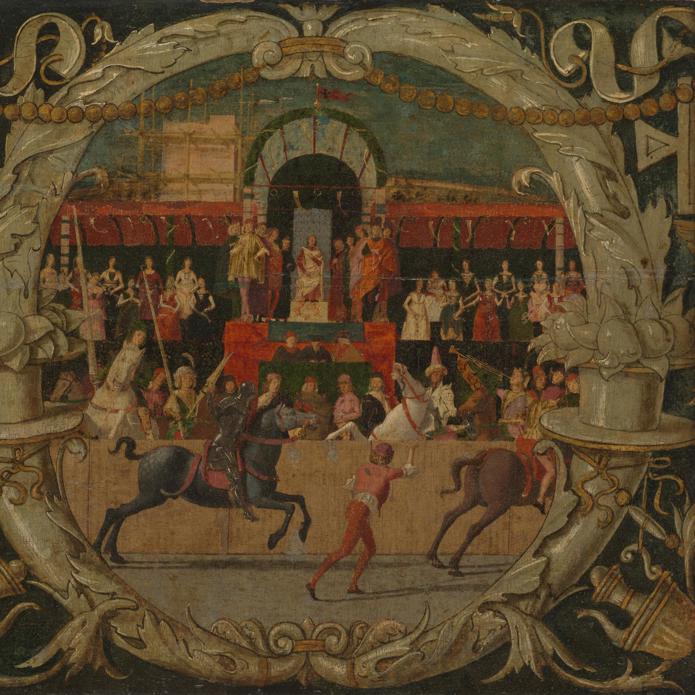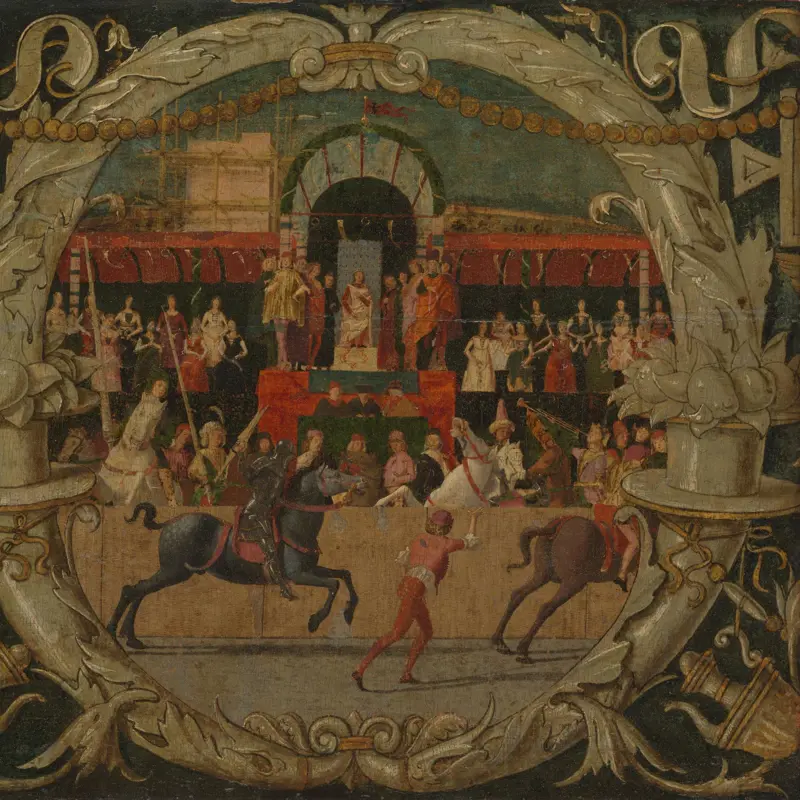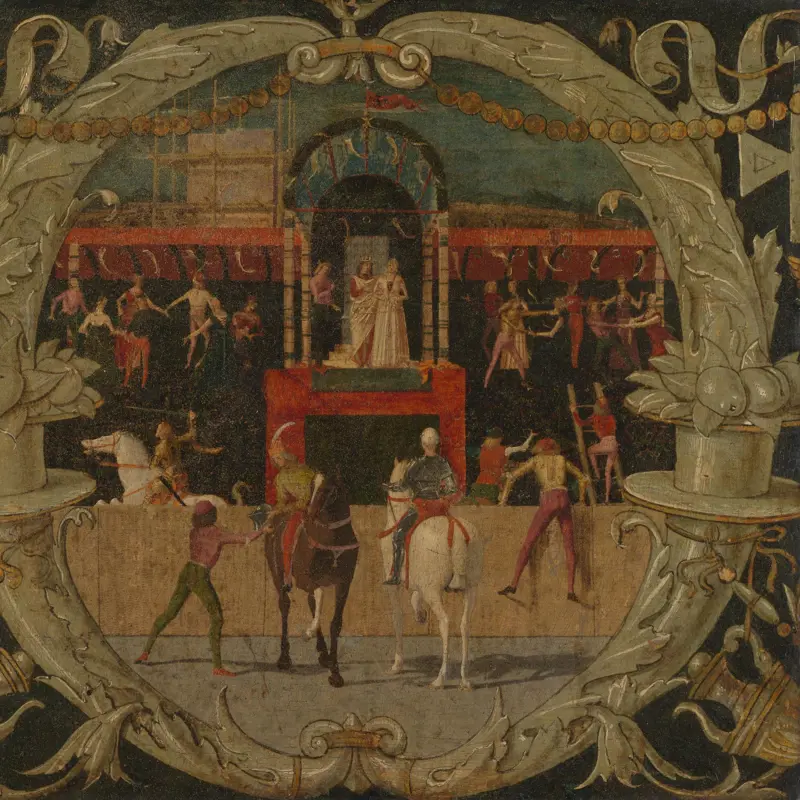Domenico Morone, 'The Rape of the Sabines (after the signal)', about 1490
About the work
Overview
This is the second of two panels from a cassone (a large chest made for a domestic setting), which depict one of the founding stories of ancient Rome. When the Romans couldn't find wives, their leader Romulus came up with a devious plan: he invited the neighbouring Sabines to attend some celebratory games so that, at a given signal, the Romans could abduct the young Sabine women.
Romulus appears on a green dais in the centre of this picture: he has given the signal by standing up and drawing his cloak around him. The young men in his entourage are dragging away their guests, while others, presumably more Romans, seem to be rushing to join the action; one climbs a ladder to get up to the stands.
In spite of its unpromising start, the story ended peaceably: the Sabine women accepted their new husbands and persuaded their families to do so also. They were held up as examples of feminine peacemaking and appropriate role models for Renaissance wives.
Key facts
Details
- Full title
- The Rape of the Sabines (after the signal)
- Artist
- Domenico Morone
- Artist dates
- About 1442 - after 1518
- Part of the series
- Two Cassone Panels with the Rape of the Sabines
- Date made
- About 1490
- Medium and support
- Egg tempera on wood (spruce, identified)
- Dimensions
- 45.4 × 49.2 cm
- Acquisition credit
- Bought, 1886
- Inventory number
- NG1212
- Location
- Not on display
- Collection
- Main Collection
Provenance
Additional information
Text extracted from the ‘Provenance’ section of the catalogue entry in Martin Davies, ‘National Gallery Catalogues: The Earlier Italian Schools’, London 1986; for further information, see the full catalogue entry.
Bibliography
-
1951Davies, Martin, National Gallery Catalogues: The Earlier Italian Schools, London 1951
-
1986Davies, Martin, National Gallery Catalogues: The Earlier Italian Schools, revised edn, London 1986
-
2001
C. Baker and T. Henry, The National Gallery: Complete Illustrated Catalogue, London 2001
About this record
If you know more about this work or have spotted an error, please contact us. Please note that exhibition histories are listed from 2009 onwards. Bibliographies may not be complete; more comprehensive information is available in the National Gallery Library.
Images
About the series: Two Cassone Panels with the Rape of the Sabines

Overview
These panels come from the front of a cassone, a large chest that was often painted with narrative scenes. Such chests were widely made throughout Italy from about 1400 to the early sixteenth century. They were often associated with marriages, and were one of the items of furniture that a groom was expected to acquire for his home in expectation of his bride.
The decoration of cassoni often reflected this link, providing what were felt to be examples of appropriate behaviour for husbands, wives and children, drawn from classical literature or history. The tale shown here, of how the early Romans abducted women when they couldn't find wives, was part of ancient Roman history. It was recounted by Livy and Plutarch, both of whom were translated into Italian in the fifteenth century.
The panels are painted on two horizontal planks of spruce. They have been cut along their side edges and may originally have been joined together.


